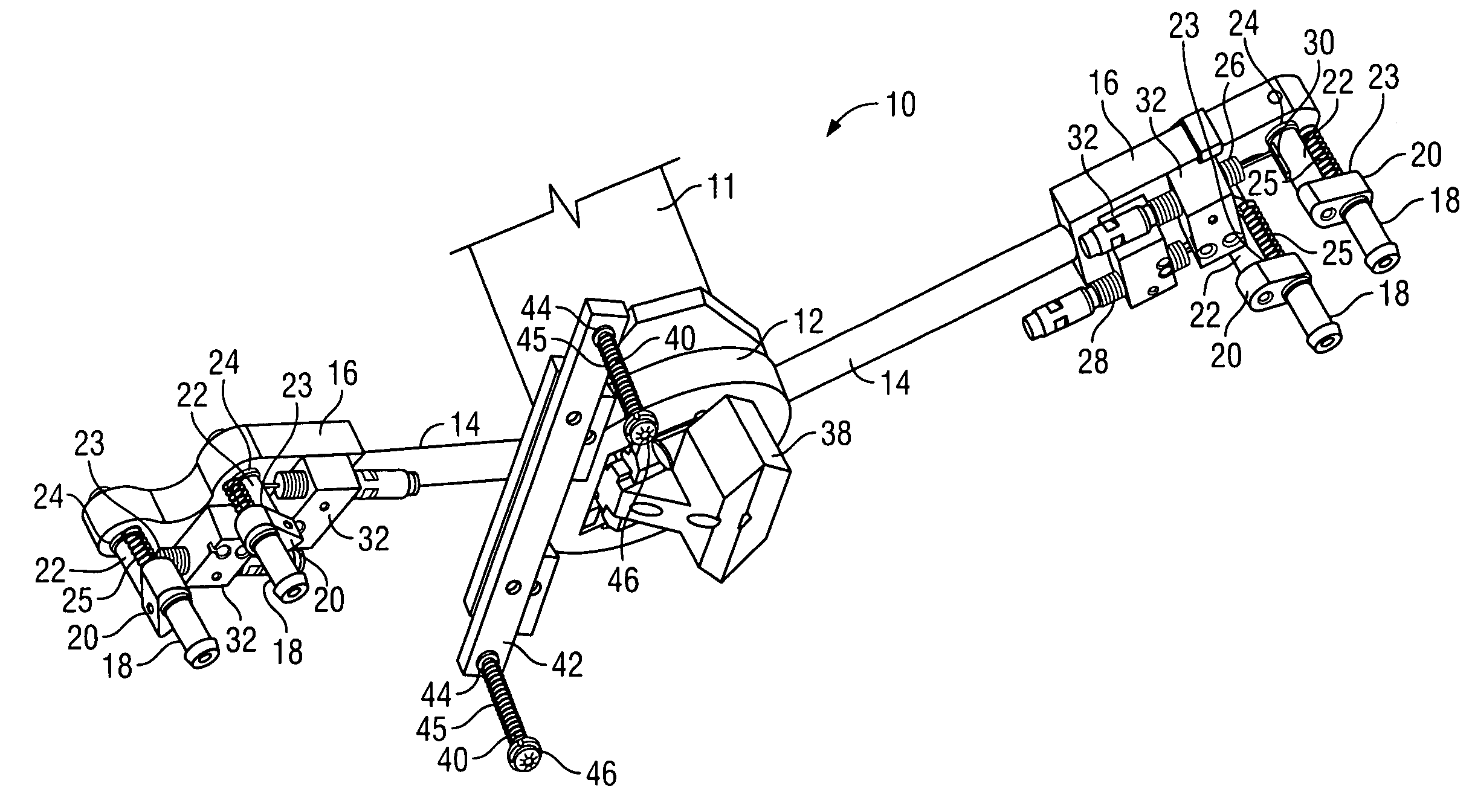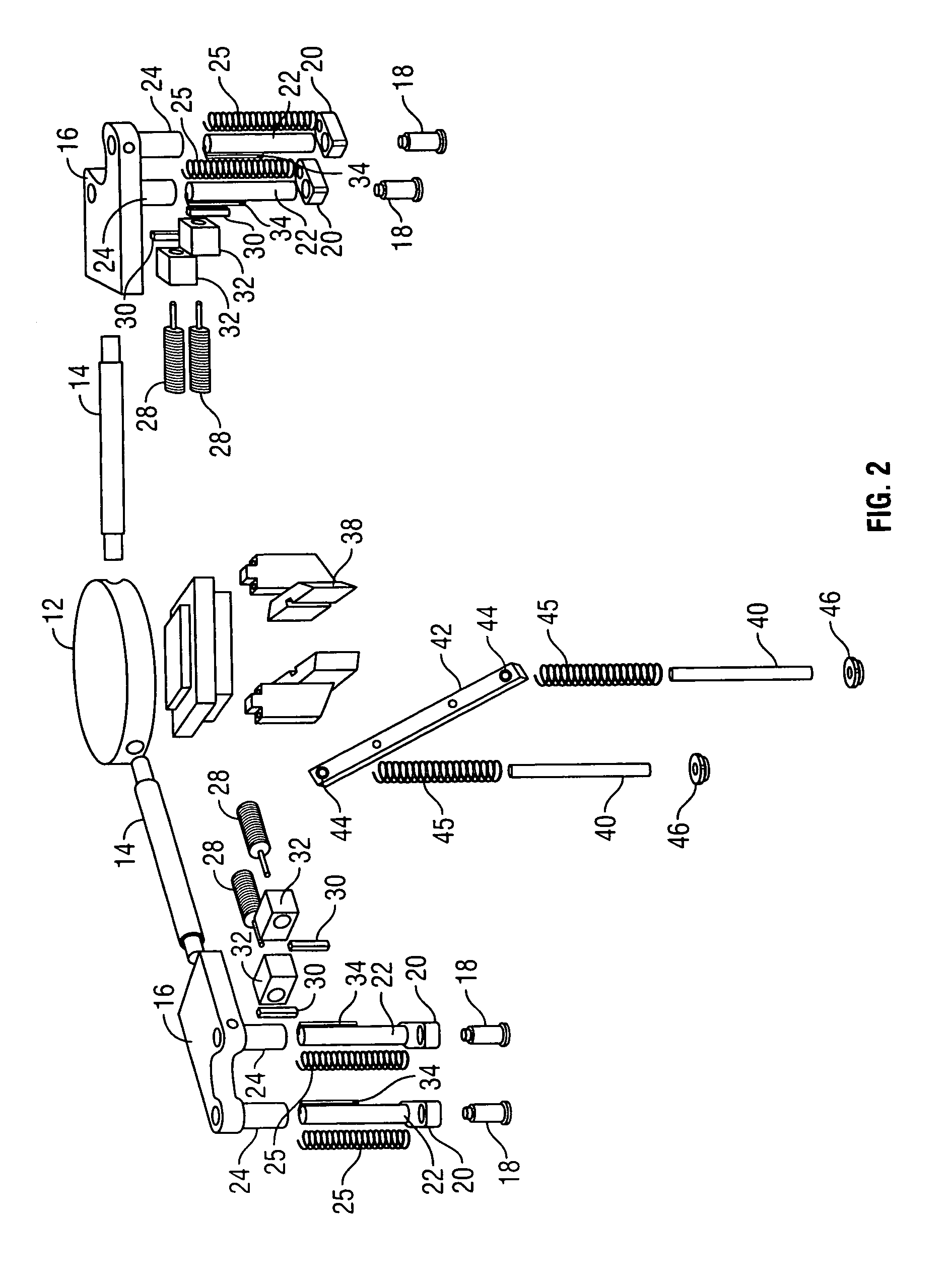Ophthalmic lens manufacturing system
a manufacturing system and lens technology, applied in the direction of grinding feeders, grinding drives, manufacturing tools, etc., can solve the problems of inability to automatically adjust themselves depending, deficient current manufacturing cells in several respects, and requiring manual labor to perform or assist with the edging process
- Summary
- Abstract
- Description
- Claims
- Application Information
AI Technical Summary
Benefits of technology
Problems solved by technology
Method used
Image
Examples
Embodiment Construction
[0022]While the present invention is capable of embodiment in various forms, there is shown in the drawings and will be hereinafter described a presently preferred embodiment with the understanding that the present disclosure is to be considered as an exemplification of the invention, and is not intended to limit the invention to the specific embodiment illustrated.
[0023]With reference to FIG. 1, one embodiment of the present invention contains a gripper tool 10, which is attached to the working end of a commercially available robotic arm 11. It is preferred that one embodiment of the present invention be used with a six axis robotic arm to allow for greater versatility, but those with skill in the art will recognize that robots having a lesser or greater number of axes can be used in the practice of the present invention. A six axis robotic arm which can be used with one embodiment of the present invention is a robotic arm manufactured by Adept (model number A600).
[0024]The gripper...
PUM
| Property | Measurement | Unit |
|---|---|---|
| resilient | aaaaa | aaaaa |
| pressure | aaaaa | aaaaa |
| thickness | aaaaa | aaaaa |
Abstract
Description
Claims
Application Information
 Login to View More
Login to View More - R&D
- Intellectual Property
- Life Sciences
- Materials
- Tech Scout
- Unparalleled Data Quality
- Higher Quality Content
- 60% Fewer Hallucinations
Browse by: Latest US Patents, China's latest patents, Technical Efficacy Thesaurus, Application Domain, Technology Topic, Popular Technical Reports.
© 2025 PatSnap. All rights reserved.Legal|Privacy policy|Modern Slavery Act Transparency Statement|Sitemap|About US| Contact US: help@patsnap.com



